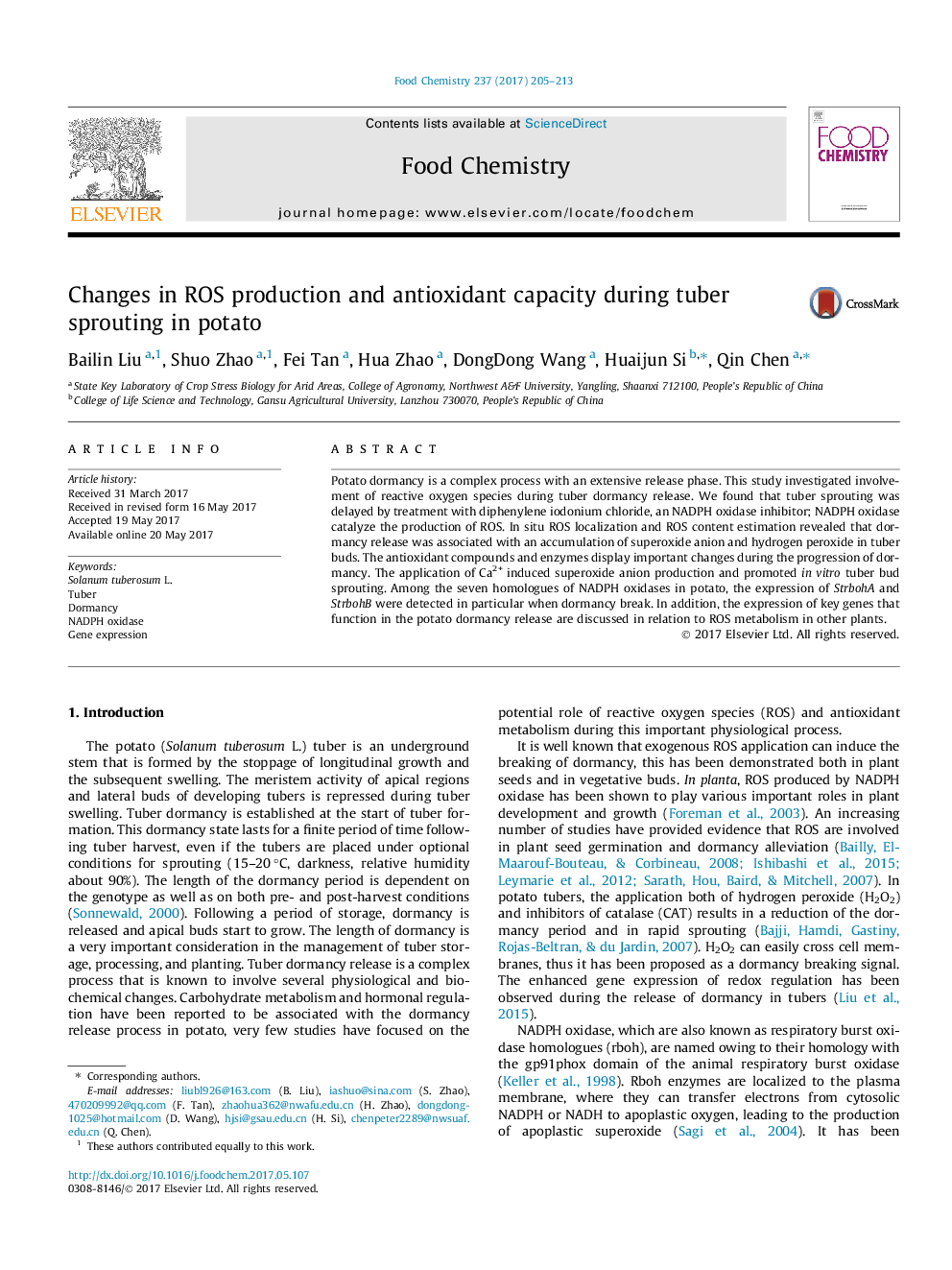| Article ID | Journal | Published Year | Pages | File Type |
|---|---|---|---|---|
| 5132717 | Food Chemistry | 2017 | 9 Pages |
â¢Potato tuber sprouting was delayed by treatment with diphenylene iodonium chloride.â¢Potato tuber dormancy release was associated with ROS accumulation.â¢Ca2+ treatment promoted in vitro tuber bud sprouting.â¢StrbohA and StrbohB are key genes involved in potato tuber dormancy release.
Potato dormancy is a complex process with an extensive release phase. This study investigated involvement of reactive oxygen species during tuber dormancy release. We found that tuber sprouting was delayed by treatment with diphenylene iodonium chloride, an NADPH oxidase inhibitor; NADPH oxidase catalyze the production of ROS. In situ ROS localization and ROS content estimation revealed that dormancy release was associated with an accumulation of superoxide anion and hydrogen peroxide in tuber buds. The antioxidant compounds and enzymes display important changes during the progression of dormancy. The application of Ca2+ induced superoxide anion production and promoted in vitro tuber bud sprouting. Among the seven homologues of NADPH oxidases in potato, the expression of StrbohA and StrbohB were detected in particular when dormancy break. In addition, the expression of key genes that function in the potato dormancy release are discussed in relation to ROS metabolism in other plants.
